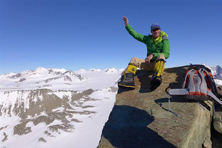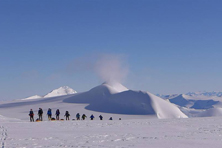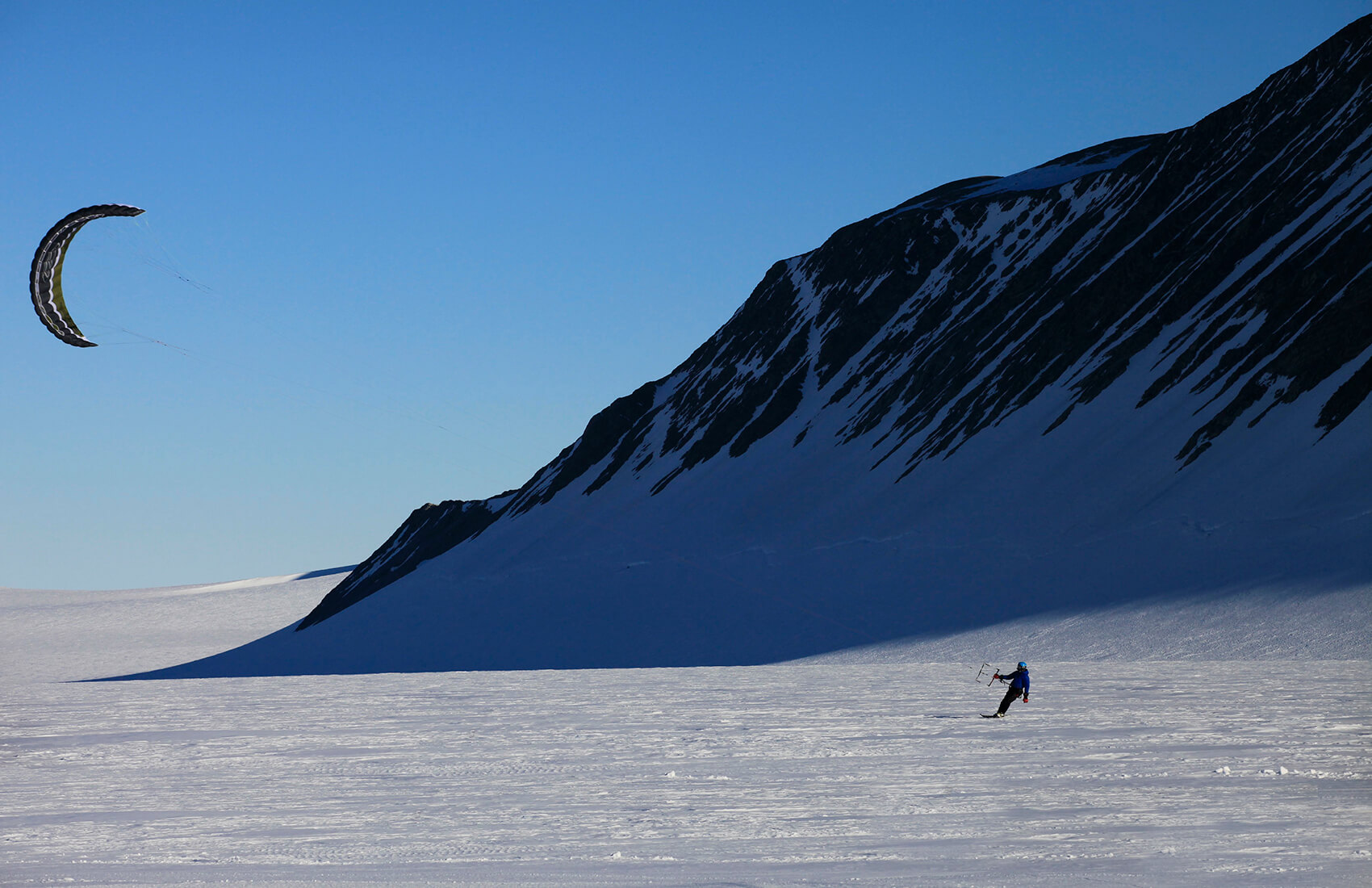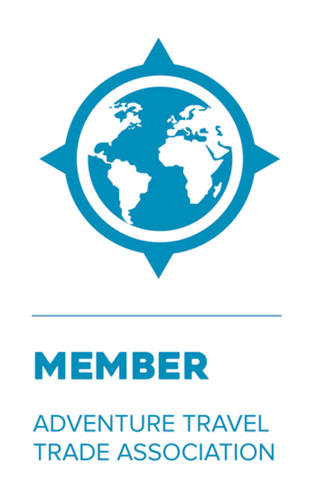 Name: Scott Woolums
Name: Scott Woolums
Role: Guide
1st ALE Season: 2009
Nationality: USA
We’re not bragging when we say that ALE guides are some of the most experienced and talented guides around. Meet Scott Woolums, who has 30+ years of guiding experience under his belt, including seven Everest summits, 40+ Denali expeditions, and innumerable expeditions to other ‘fun corners of the world.’
We caught up with Scott, somewhere between Kitesurfing in Panama, packing in Hood River Oregon, and heading off to climb Carstenz Pyramid…
Why did you want to work in the Antarctic? What was the attraction?
Antarctica is truly one of the great frontiers of the world. To have even a small opportunity to see and explore Antarctica drove me to find a way. The vast remoteness, opportunity for real adventure, working with a crazy fun bunch of people and sharing all this with very interesting guests from all across the world have all been positive parts of the desire to work in Antarctica.
How did you start working for ALE? What was your previous experience and how did it prepare you for Antarctic guiding?
I had been bringing guests to Mount Vinson as an independent guide. I met with ALE’s owners and discussed the possibility of working with them, as it just seemed like a natural fit with my experience. ALE seemed like it would be a very fun place to work, offered possibilities for a variety of guiding…and perhaps a little free time along the way. And so it’s been! Previously I had been guiding Everest (7x summits), Denali (40+ expeditions), Aconcagua (30+ expeditions), Elbrus, Kilimanjaro, Carstensz plus lots of other fun corners of the world.
What are your greatest challenges guiding in Antarctica? How do those challenges compare to guiding on other big mountains?
Antarctica has the potential to be much colder than many other areas of the world. Managing that is one of the bigger challenges, whether it’s Skiing the Last Degree or up high on Mount Vinson. You also have to be better prepared for emergencies due to the remoteness of Antarctica and the challenges related to evacuation. Guiding on Everest has its own challenges, but there is really only one route, a fairly fixed program, and lots of support when you’re there. In Antarctica we are doing a lot of different things and each demands re-thinking everything before going out. That makes it far more interesting.
What do you love best about your work with ALE?
- Showing people some of the best areas of Antarctica.
- Being out on expeditions that

are 100% pure adventure in a place where the outcome is still uncertain. That defines real adventure! - It can be exploring on alpine touring skis, climbing Vinson’s thin summit ridge, snow kiting across the ice cap in solid katabatic winds, or any number of other experiences. But it mostly comes down to the guests and their energy and appreciation for being there.
- The whole ALE crew at Union Glacier and Vinson Base Camp are a unique and fun team to work with and being part of the ALE guide team is definitely a privilege. The skill and level of experience has to be one of the highest in the world. We come from different backgrounds, countries, experience sets and we have managed to pool all that into a very safe and solid Antarctic guiding program.
- Working as part of a bigger team, ongoing challenges and opportunities to learn new things.
- But best for last, I enjoy doing the dishes at Union Glacier Base Camp when there are over 100 people in camp! 🙂
Last year marked your 7th round climbing all Seven Summits. What about climbing the world’s tallest peaks continues to draw you and other mountaineers?
For me it’s been far more about the opportunity to travel to and explore remote places… climbing just happens to be part of the whole journey. The people, cultures, travel experiences, and sharing all of it with both new and old friends while climbing has been my goal. It’s always important to enjoy everything surrounding an expedition and not focus only on the sometimes very small summit. Vinson and most all the other Seven Summits really are powerful experiences that continue to offer me that mix of adventure and skiing/climbing/kiting in wild remote settings.
How does Vinson compare to other Seven Summits? What skills and experience should people have?
Mount Vinson is similar to Denali, but it has its own unique challenges. Vinson is very remote and extremely cold, more so than any of the other Seven Summits and so demands a little more thought-out, conservative approach to climbing. You could say it’s shorter, but the possibility for extreme weather and long delays is always there.
Vinson is a reasonably serious expedition. Proper preparation and training will make it a more enjoyable experience. Cold weather and expeditionary mountaineering training is best. Experience on Denali is most beneficial, as Vinson is like a shorter, more intense, and colder Denali expedition. There are crevasses, so some familiarity with glaciers and proper glacier travel techniques is important. As with any expedition, being in good physical shape will also make it much more enjoyable and it’s also worth spending some time selecting your personal equipment. Focus on keeping it lightweight, but sufficiently warm and durable for extreme cold. A good mix of all the above well help you have better, safer and more successful experience on Vinson.
You have also guided on Mount Sidley – Antarctica’s highest volcano. Tell us about that experience?
 I have been fortunate to guide two successful expeditions to the summit of Mount Sidley and I really like the challenges that it involves. Mount Sidley offers one of the most remote climbing expeditions anywhere in the world. Many companies say that about their trips, but a Sidley expedition truly is! It’s like Mount Blanc or Rainer sitting out in the middle of Marie Byrd Land, definitely not a crowded vacation destination! The peak is not technically difficult, but it’s quite big and has a fascinating summit ridge lined with rime ice mushrooms! It’s beautiful, remote, and challenging. It demands a focused effort to fly out, climb and get back, with the possibility for some real environmental challenges and delays (i.e. serious weather). But that’s what makes for a great adventure!
I have been fortunate to guide two successful expeditions to the summit of Mount Sidley and I really like the challenges that it involves. Mount Sidley offers one of the most remote climbing expeditions anywhere in the world. Many companies say that about their trips, but a Sidley expedition truly is! It’s like Mount Blanc or Rainer sitting out in the middle of Marie Byrd Land, definitely not a crowded vacation destination! The peak is not technically difficult, but it’s quite big and has a fascinating summit ridge lined with rime ice mushrooms! It’s beautiful, remote, and challenging. It demands a focused effort to fly out, climb and get back, with the possibility for some real environmental challenges and delays (i.e. serious weather). But that’s what makes for a great adventure!
What are your three ‘must have’ items on the ice?
- A Buff scarf
- R1 Hoody
- A light-weight down/synthetic hooded jacket.
What are your top three ‘tricks of the trade’ for Antarctic mountaineering?
- Purchase ultra-lightweight kit and layers. Most of the time a Patagonia R1 Hoody and a light to mid-weight down hooded sweater/jacket will be all you need when active.
- Change your layers BEFORE getting too hot or cold.
- Enjoy…not having a schedule!
What do you do for the rest of the year, when you are not in the Antarctic?
I am almost always moving around the world, guiding trekking and climbing expeditions. You will find me kitesurf
ing everywhere in between jobs. I live in the little town of Hood River, Oregon, the perfect place for planet-wide exploring and vacations at home! For training I climb in the Cascades, mountain bike, road bike, skate ski and alpine tour, kitesurf, and hike. I enjoy playing tennis, standup paddleboarding, flying my little plane, Dual-Sport motorcycle rides…All just fun stuff! For me, it’s simply about getting outside!





